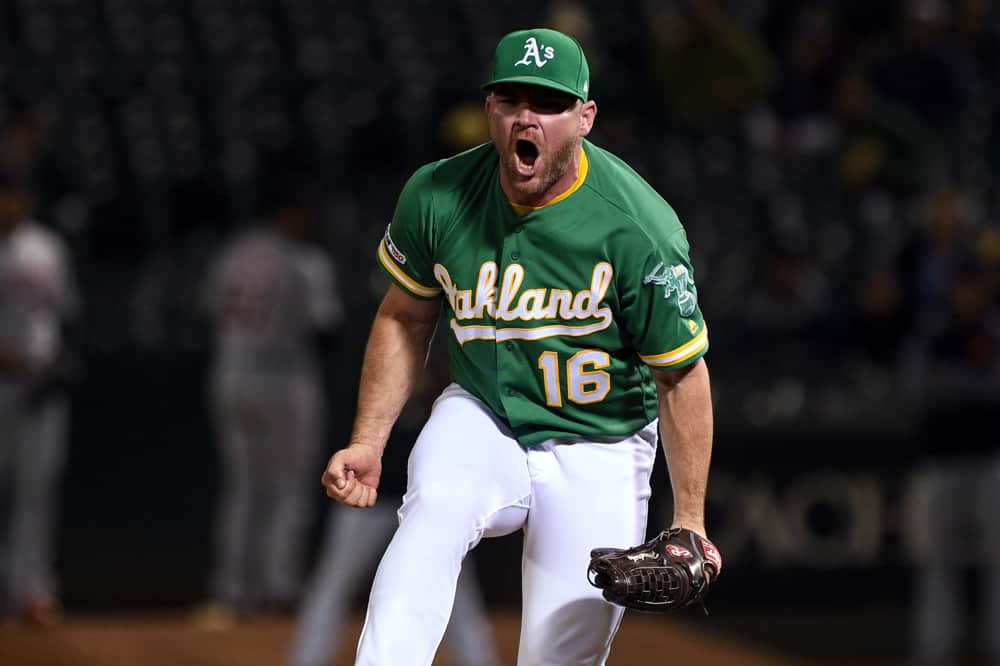As many here and elsewhere have noted, Rick Hahn isn't afraid of inviting your comparisons to the first time he won the winter. Prior to the 2015 season, he traded for one year of a workhorse starter in Jeff Samardzija. This time, it's Lance Lynn. Six years ago, he plugged a hole in the outfield with a high-floor, low-ceiling outfielder in Melky Cabrera. Adam Eaton became that guy.
Now here comes Liam Hendriks, looking like he's filling David Robertson's dual role as the offseason's four-year closer signing and biggest financial commitment. The White Sox signed him to an odd contract whose guaranteed amount is more certain than the length. He's going to make $54 million from the White Sox no matter what, including $39 million over the first three years. As for the remainder, it's either a $15 million club option for 2024, or a $15 million buyout paid out over 10 years.
The unusual structure has something of a precedent, as Paul Konerko has been earning $1 million from the White Sox for the last seven years, and will receive his final payment on July 1. In Konerko's case, he let the Sox withhold $7 million of his $13.5 million salary in 2013 to spread out from 2014 through 2020 (the one-year contract he signed to wrap up his career pushed back the terms a year). With Hendriks, the deferred money is presented as a stark baseball choice that could result in an insult -- paying him $15 million right now to stay, or spreading out $15 million to make him go away. But that's a problem for Tomorrow Guy, or 2024 Guy to be precise.
There's nothing to dislike about having Hendriks in the White Sox bullpen. He's been the best reliever in the game the last couple of years, and the Sox saw up close during the wild card series how much trust he earned from his manager. The Sox needed a pure strikeout guy, and Hendriks delivers an alarming amount of them.
If excitement is muted, it has more to do with Hendriks' role than the pitcher himself. His work can only be properly enjoyed if his teammates do well enough in the first eight innings. Robertson fell short as the crowning piece of the 2014-15 offseason because he didn't get enough of those leads. He personally earned his $46 million deal, yet the White Sox did not get their money's worth because they did not have a single winning season over Robertson's term.
So when you see Jerry Reinsdorf approving a lot of money for a closer, and not a lot of money or resources toward positions in greater need of an upgrade, it's fair to wonder if priorities are once again skewed.
In St. Louis, there's an urban legend that says no building is allowed to rise higher than the Gateway Arch. The idea that no building in Washington D.C. can stand taller than the Capitol is similarly unfounded, but persistent. When Philadelphia finally erected a skyscraper higher than the William Penn statue atop its city hall, it was spun into a curse explaining the lack of sports championships.
Height restrictions, real or imagined, aren't always so trivial. They often rise from practical implications, like airport flight paths or fault lines. Sometimes they're used to maintain historical character. That's where it can get sketchy, because oftentimes those arguments are used to quash density or otherwise cling to a status quo that benefits a smaller and smaller group of people every year.
That's what comes to mind when the White Sox signed Hendriks for $54 million during the same winter they signed Eaton for $7 million. There's nothing particularly wrong with the dollar amounts each player received, but we've seen that kind of allocation be used in a manner equal parts self-aggrandizing and self-defeating. Hahn can say Reinsdorf opens up the budget for top free agents, but it just so happens that top closers cost a fraction of what top outfielders and top starting pitchers do. It's part of a budget that self-governs down to a level lower than most teams. The skyline ends up flat, and while everybody can see the real ornate water tower, it's just a water tower, and not something that attracts visitors and keeps them there.
One key difference: This is Hahn's second building winter, not his first. He signed Yasmani Grandal for $73 million in November 2019, and Dallas Keuchel will make $74 million if he earns his club option. Robertson's contract ended up being the biggest commitment of an entire ramp-up, while Hendriks is running third at the moment. That alone reflects a healthier set of priorities.
Not to mention the White Sox went 35-25 last year. The broader amount of young talent on the roster makes it a much better time for a landmark closer than the 73-89 White Sox from 2014. While the Sox's record in late innings shouldn't be expected to improve from the last two seasons even with Hendriks aboard, preserving that success rate is just as crucial for securing marginal wins. After seeing Hahn whiff on second-tier relievers in successive offseasons, I welcome him super-solving an issue instead of attempting to finesse it.
Would I have preferred to see that attitude deployed elsewhere? Yes. And maybe they will. They should, whether it's by ponying up once more, or pouncing on falling prices, although the contracts signed by Hendriks and James McCann show that bargains aren't yet the norm during a pandemic offseason. The Sox aren't repeating a mistake by signing a four-year closer. They'll only be repeating one if they stop focusing on getting him leads.
(Photo by Cody Glenn/Icon Sportswire)





